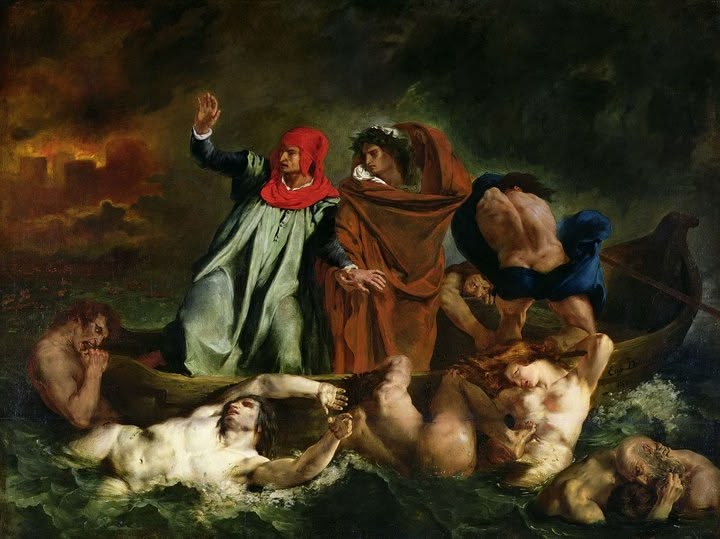This page is a permanent link to the reply below and its nested replies. See all post replies »
Nightwings · 31-35, F
That is one very red... what is that actually called? The headwear I mean? It drew my eyes immediately, next did the man in the cobalt blue garment, and first then, the man in the middle.
RuyLopez · 56-60, M
@Nightwings Your question brought a smile to my face because I have wondered on a few occasions what this type of headwear was called and how it came about. Most recently I have been rewatching Game of Thrones and the question came to me again because of the Freys...although their's is really more a Coif I believe. As far as I have been able to determine the cap in the painting is called a Chaperon and the elongated tail that is wrapped around the shoulders is call the Liripipe.
Chaperon: Late Gothic (1350-1450 C.E.). Caped hood with long liripipe which was sometimes worn draped around shoulders. Later worn with face opening over top of head and cape drooping decoratively over side.
Chaperon: Late Gothic (1350-1450 C.E.). Caped hood with long liripipe which was sometimes worn draped around shoulders. Later worn with face opening over top of head and cape drooping decoratively over side.
Infamous607 · 51-55, M
@Nightwings Really? That's what got your attention. So, those people laying around naked and jacked, you were like ...oh yeah whatever .. but look at that headwear!!!
Nightwings · 31-35, F
@Infamous607 I find the colours in this painting very interesting because they are intentional, thus tell the story of what the painter himself wanted us to see. I get the sense that the man in the middle is the most important person there, yet we are meant to oversee him at first glance. It makes me question why? (=
Infamous607 · 51-55, M
@Nightwings I'm going to say this with the upmost respect I can muster for you because I like you. So, know that, out of that respect I'm being very generous. 😊
That said, I do get the intricacies of the work. I also understand it's prominence in the study of light for example.
I get it.
But my innate cynicism reacts to someone looking at it and saying it's a life changing experience.
I do concede that maybe I'm ignorant and therefore I don't understand. Granted.
Still I think sometimes we just say stuff about things to sound more special when we were special already. Anyway just me talking.
That said, I do get the intricacies of the work. I also understand it's prominence in the study of light for example.
I get it.
But my innate cynicism reacts to someone looking at it and saying it's a life changing experience.
I do concede that maybe I'm ignorant and therefore I don't understand. Granted.
Still I think sometimes we just say stuff about things to sound more special when we were special already. Anyway just me talking.
Infamous607 · 51-55, M
@Nightwings The one in the red? Yeah. Looks like he's the main guy. They're supposed to be Dante and Virgil.
Or...Vigilio!!
Anyway yeah..
Or...Vigilio!!
Anyway yeah..
Infamous607 · 51-55, M
@Infamous607 in any case, sorry for interrupting your conversation.
Nightwings · 31-35, F
@Infamous607 My comments are really not that deep. 😅
I'm just a curious soul. I in part commented on this post because I want to support more engaging and creative conversations on SW, despite not having a lot to contribute with myself on this particular topic. I am more into video games and fictional literature, although I do make amateur art occasionally. (=
I'm just a curious soul. I in part commented on this post because I want to support more engaging and creative conversations on SW, despite not having a lot to contribute with myself on this particular topic. I am more into video games and fictional literature, although I do make amateur art occasionally. (=
Infamous607 · 51-55, M
@Nightwings more engaging and creative conversations. That would be a lot to keep up with for me. I just say what I want. Those who get me, will come.
Infamous607 · 51-55, M
@Nightwings I'm sure you have a lot to offer and I'm sure it would probably way more interesting than this painting.😊
RuyLopez · 56-60, M
@Nightwings
Here's a more detailed breakdown of the major elements.
Dante Alighieri:
The poet himself, depicted as the central figure in the painting, experiencing terror and fear as he witnesses the horrors of the underworld.
Virgil:
Dante's guide, the Roman poet, who is shown as calm and reassuring, leading Dante through the infernal regions.
Charon:
Though not explicitly shown as a main figure, Charon is the ferryman of the underworld and is implied to be involved in transporting the souls across the River Styx.
Damned Souls:
These are the figures that surround the boat, representing those condemned to Hell. They are depicted as struggling, reaching out, and attempting to cling to the boat.
Other Figures:
The background also includes the City of Dis and the dark, smoky atmosphere of Hell, with flames and figures suggesting the torments of the damned
Here's a more detailed breakdown of the major elements.
Dante Alighieri:
The poet himself, depicted as the central figure in the painting, experiencing terror and fear as he witnesses the horrors of the underworld.
Virgil:
Dante's guide, the Roman poet, who is shown as calm and reassuring, leading Dante through the infernal regions.
Charon:
Though not explicitly shown as a main figure, Charon is the ferryman of the underworld and is implied to be involved in transporting the souls across the River Styx.
Damned Souls:
These are the figures that surround the boat, representing those condemned to Hell. They are depicted as struggling, reaching out, and attempting to cling to the boat.
Other Figures:
The background also includes the City of Dis and the dark, smoky atmosphere of Hell, with flames and figures suggesting the torments of the damned







